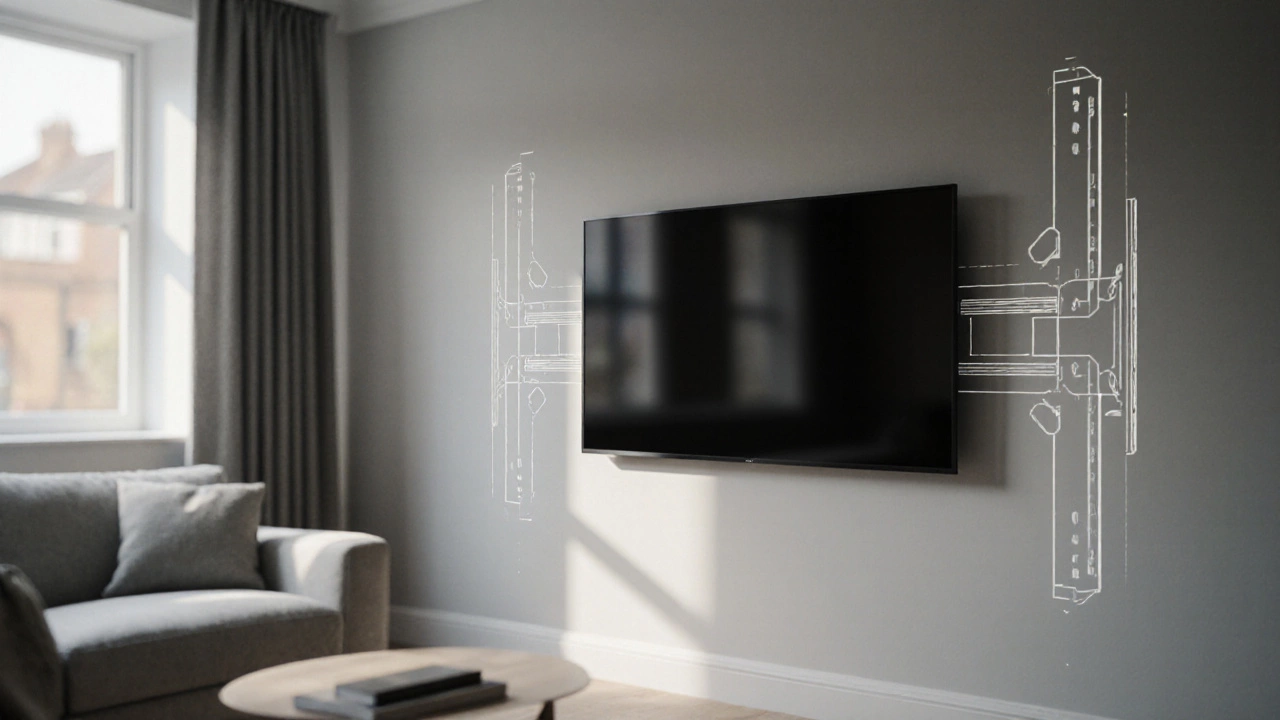Wall Mount TV: Smart Set‑up Tips & Gotchas
When working with wall mount TV, a method of attaching a television directly to a wall to save floor space and create a sleek look. Also known as TV wall mounting, it requires proper brackets, studs, and cable management for safety and aesthetics.
Key Considerations Before You Drill
If you're planning a wall mount TV, start with the bracket. A good TV bracket, the metal frame that holds the screen to the wall determines tilt, swivel, and load capacity. Choose a bracket rated for your TV size and weight; a mismatched bracket can strain the mount and risk a fall. Next, locate the studs. A stud finder, a handheld device that detects the wooden or metal framing behind drywall is essential – anchoring to drywall alone is a recipe for disaster. Once the mount is secure, plan the cables. Proper cable management, the practice of routing power and signal wires discreetly keeps the installation tidy and prevents strain on connectors. Remember, a clean setup not only looks better but also reduces the chance of overheating or accidental unplugging.
Wall mount TV isn’t just about the hardware; it shapes the whole home theatre setup, the arrangement of screen, sound, and seating for an immersive viewing experience. The height you choose affects eye level and neck comfort; the average recommendation is to place the screen so the center sits about 42 inches from the floor for a seated viewer. Acoustic considerations matter too – speakers should be positioned to complement the wall‑mounted screen, not get blocked by it. If you love a minimalist look but worry about hidden drawbacks, weigh the risks: limited adjustability, harder access to ports, and potential damage to plaster or brick when you eventually move the TV. These factors often push homeowners toward a hybrid approach.
When the cons outweigh the pros, a well‑designed TV stand, a piece of furniture that supports the television on the floor can be a smarter choice. A stand offers adjustable height, easy cable routing, and the flexibility to swap TVs without drilling. Look for models with sturdy frames, integrated cable channels, and a weight rating that matches your screen. Some stands even double as storage units for consoles and media players, solving the clutter issue that wall mounting can create. Whether you opt for a sleek wall mount or a versatile stand, the goal is the same: enjoy clear pictures, safe installation, and a room that feels both functional and stylish. Below you’ll find detailed articles that dive deeper into bracket types, cable tricks, cost breakdowns, and alternative furniture solutions, giving you the full picture before you make a move.
Creative Ways to Support a TV Without a Stand
Discover practical, safe ways to support a TV without a stand-wall mounts, floating shelves, ceiling rigs, DIY risers, and more, plus cost and installation tips.
View more